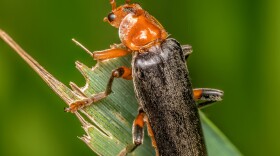In nature, there are amazing examples of insects that grow their own food.
Leafcutter ants use leaves to grow a fungus that feeds their entire colony.
Many ant species protect and tend herds of aphids to drink their sugary secretions.
But for most insects, getting a meal relies on their foraging or hunting abilities.
Bumblebees certainly fall into that category. However, while they might not be able to grow their own food, they’ve found a way to force their food to grow.
Bumblebee colonies start in the early spring with a single queen that survived the wintered. As the colony begins to grow, the first workers have a big job ahead in terms of finding enough pollen to feed their family at a time of year when flowering plants are hard to find.
Faced with limited resources, a study conducted by Swiss researchers revealed that some bumblebees take matters into their own hands. Instead of only searching for the limited amount of pollen that’s available, the bumblebees also spend their time damaging the leaves of the plants that will soon flower.
While it might seem like they are taking their frustrations out on the poor plants, they are actually enacting a plan.
When placed under stress, if a plant senses that it is damaged enough that it could die, it responds by flowering in an effort to bear fruit and produce seeds in hopes of creating the next generation.
The bumblebees have learned to take advantage of this response. While the damage they create does not kill the plant, it causes it to flower earlier than normal, providing a much-needed supply of pollen for the bumblebee colony.





